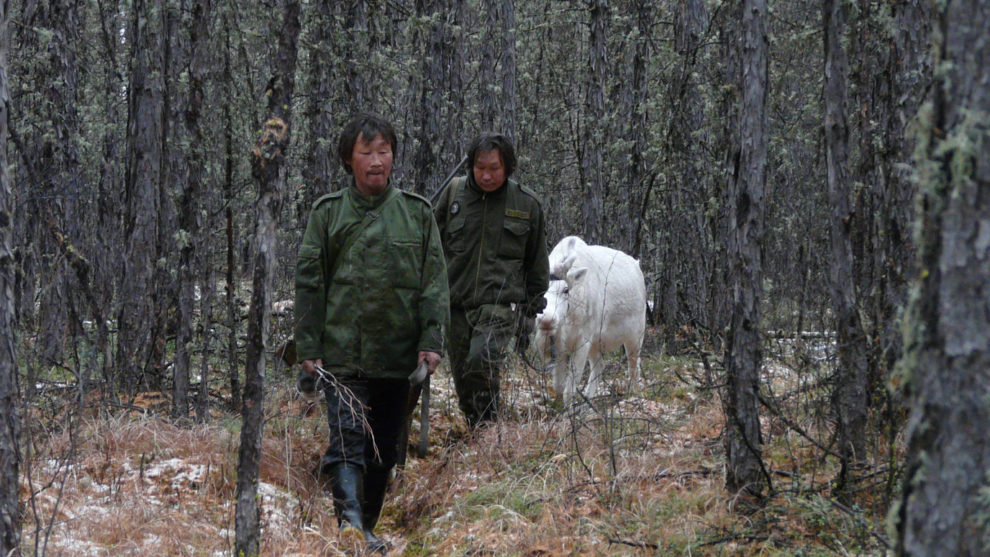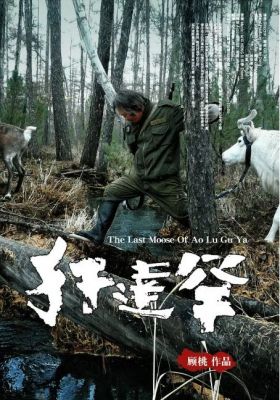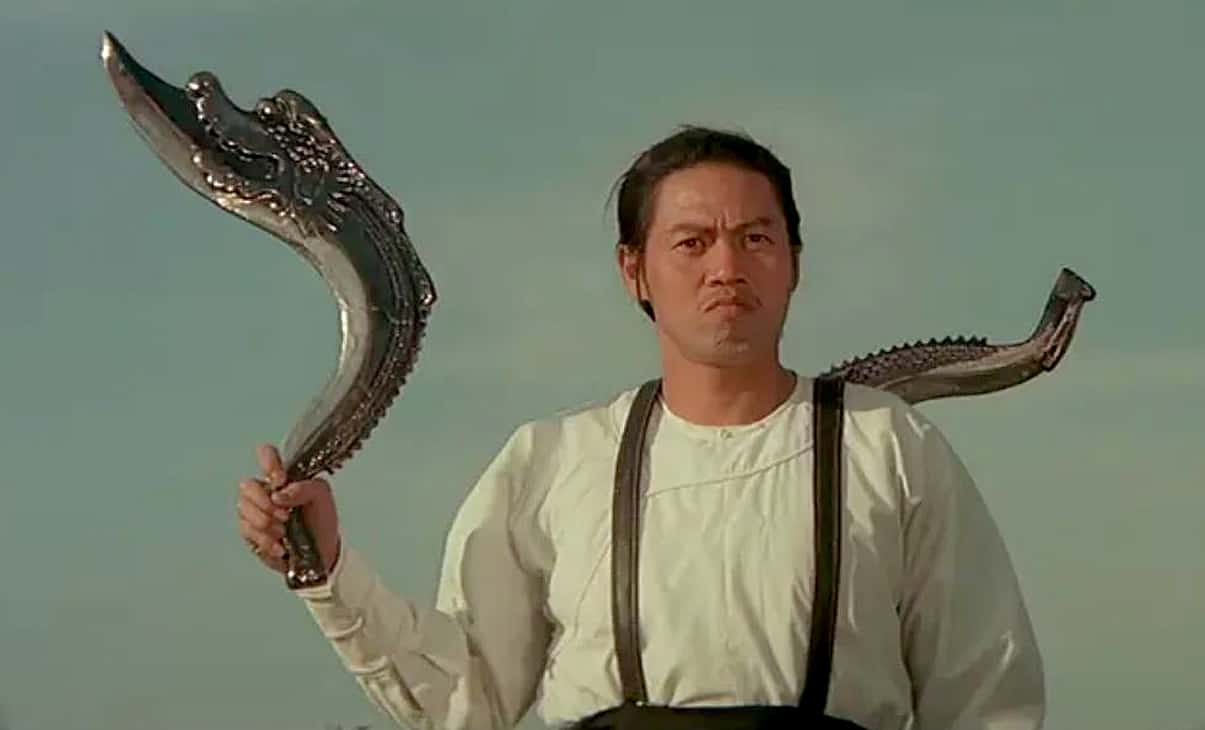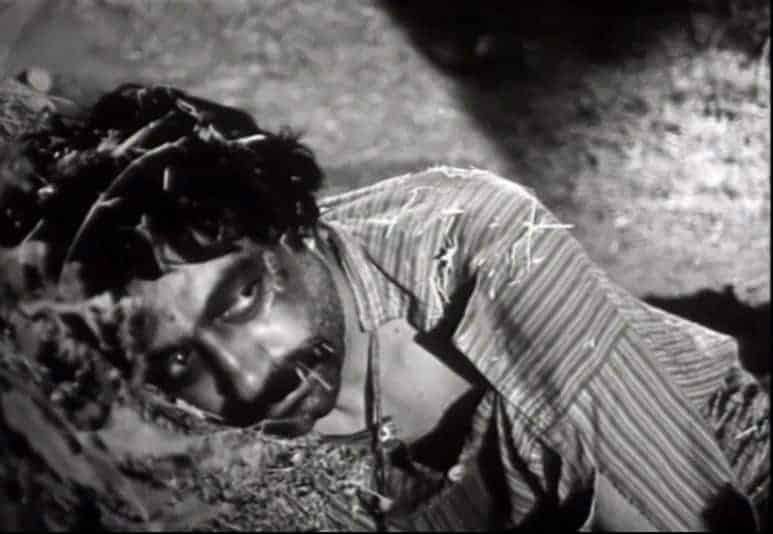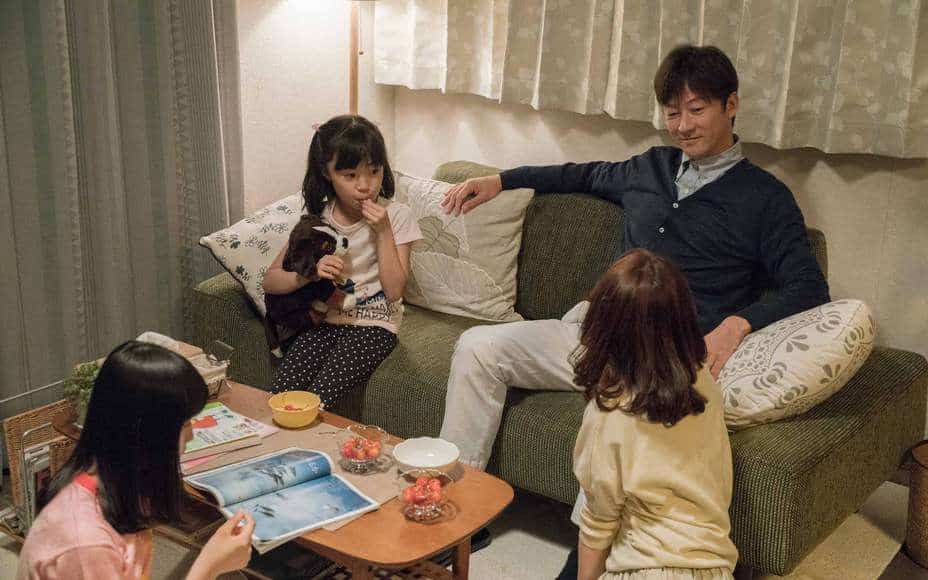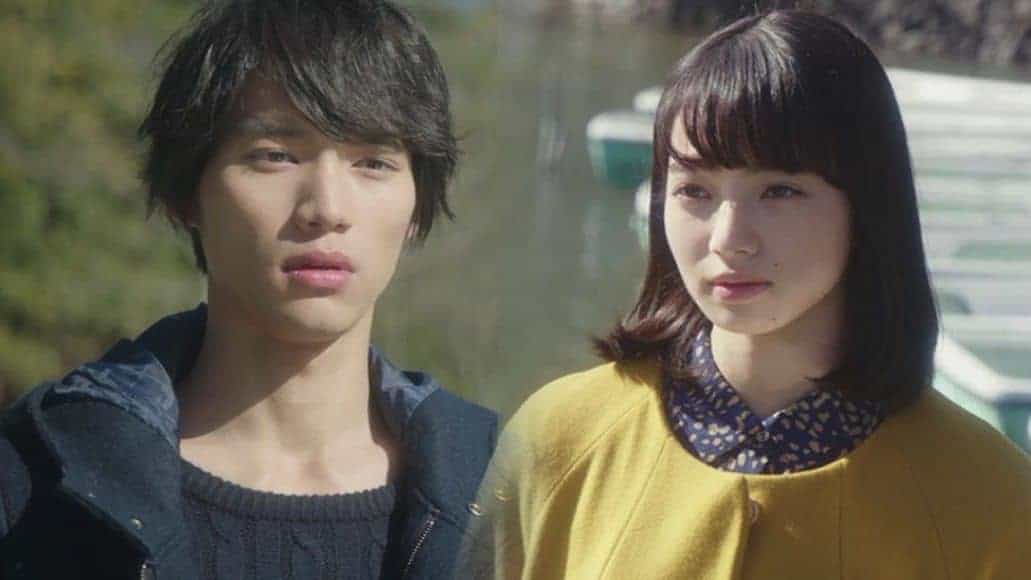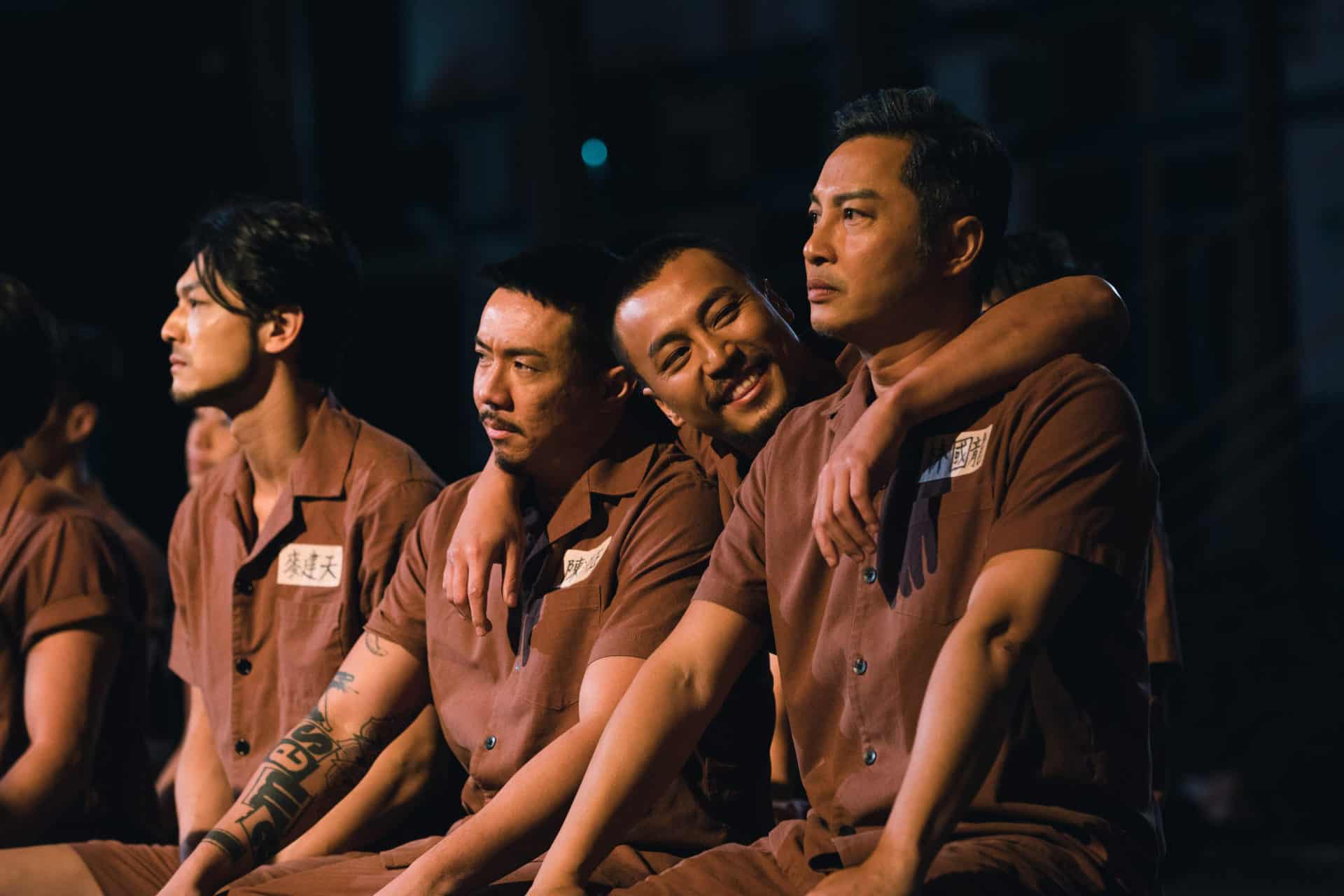As Gu Tao's third part in his series about the Ewenki people, “The Last Moose of Aoluguya,” opens, we see Weijia, a member of the family whose life the director has documented for over a decade, leaning on an old, somewhat dirty, bed. We don't know where he is, maybe in the settlement, given to the ethnic group by the People's Republic of China, maybe somewhere else. One thing is certain, though, he is not in the place he feels most comfortable at – his family's dwelling in the mountains. Fiddling with a small bottle of alcohol, he casually tells us that he has been to jail once for firing a gun, probably soon after the Chinese government banned his people from hunting in 2003. As he speaks, we hear Liuxia saying something in drunken stupor. Neither the director, Gu Tao, nor her brother, Weijia, pay any attention to her, even the camera doesn't shift to show her, making us realize that this is going to be a portrait of the alcoholic with artistic sensibility Weijia.
The Last Moose of Aoluguya is streaming on CathayPlay
Similarly to Gu's second movie about the Ewenki, “Yuguo and His Mother,” “The Last Moose of Aoluguya” contains scenes and interactions shown (or at least, hinted at) in “Aoluguya, Aoluguya.” However, in the context of Weijia's story, they take on a completely different meaning. Take for example the final scene of “Aoluguya, Aoluguya” in which Weijia, together with a few of his friends, go to worship their ancestors' graves and in the meantime, create both a ruckus and a mess. Whereas in the first movie this looks like an equally funny and embarrassing mess done while incredibly drunk, here it is framed like the struggle of a man to protect his culture and identity. The reason for that is the fact that Weijia is an incredibly complex and sensitive person who suffers deeply from the changes in the ways his people live.

The opening scene of the movie hints at another difference between “The Last Moose of Aoluguya” and the two previous movies about the Ewenki. Instead of the government-built settlement and the few left dwellings in the mountain, a large portion of the documentary takes place in Sanya, a tropical city in Hainan province. He isn't there because he wants to, though, but because his mother posted a singles ad from his name and the woman who answered it is from there.
From the moment he arrives there, around an hour into the documentary, he feels deeply uncomfortable. That is normal, considering that the artistic and sensitive Ewenki loves the mountains and the old ways of his people more than anything. In fact, he spends the majority of the first hour, shot in the span of a couple of three years, bemoaning the death of his culture and the destruction of the forests and its ecosystem by the Han Chinese.
As his life with his girlfriend goes on, and as her ways of trying to stop him drinking become more extreme (she goes as far as to admit him in a mental institution), we realize more and more not only that he is not happy there, but more importantly, that he doesn't belong to her world. He wants to be free, living the way his ancestors did in the past, but he isn't allowed to, nor does the majority of his fellow Ewenki seem to want to. So, even when he returns home at he end of the film, there is nothing and no one waiting for him there. Though the tent he used to live at is still there, his mother and sister are not. Just like the title suggests, he is the last one in Aoluguya.


